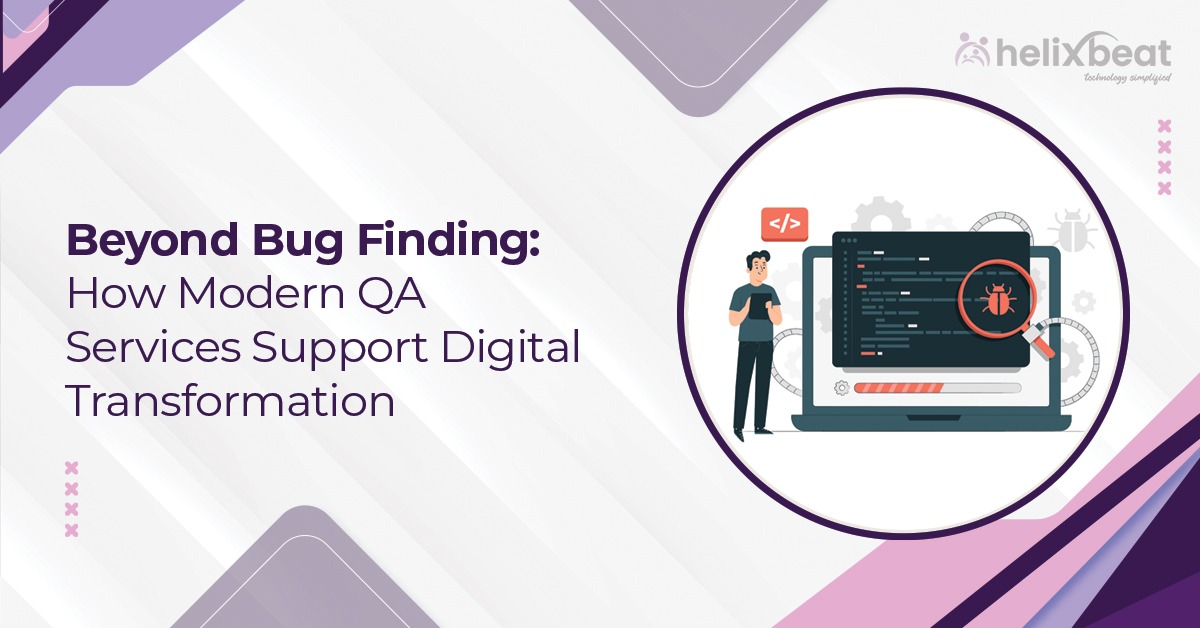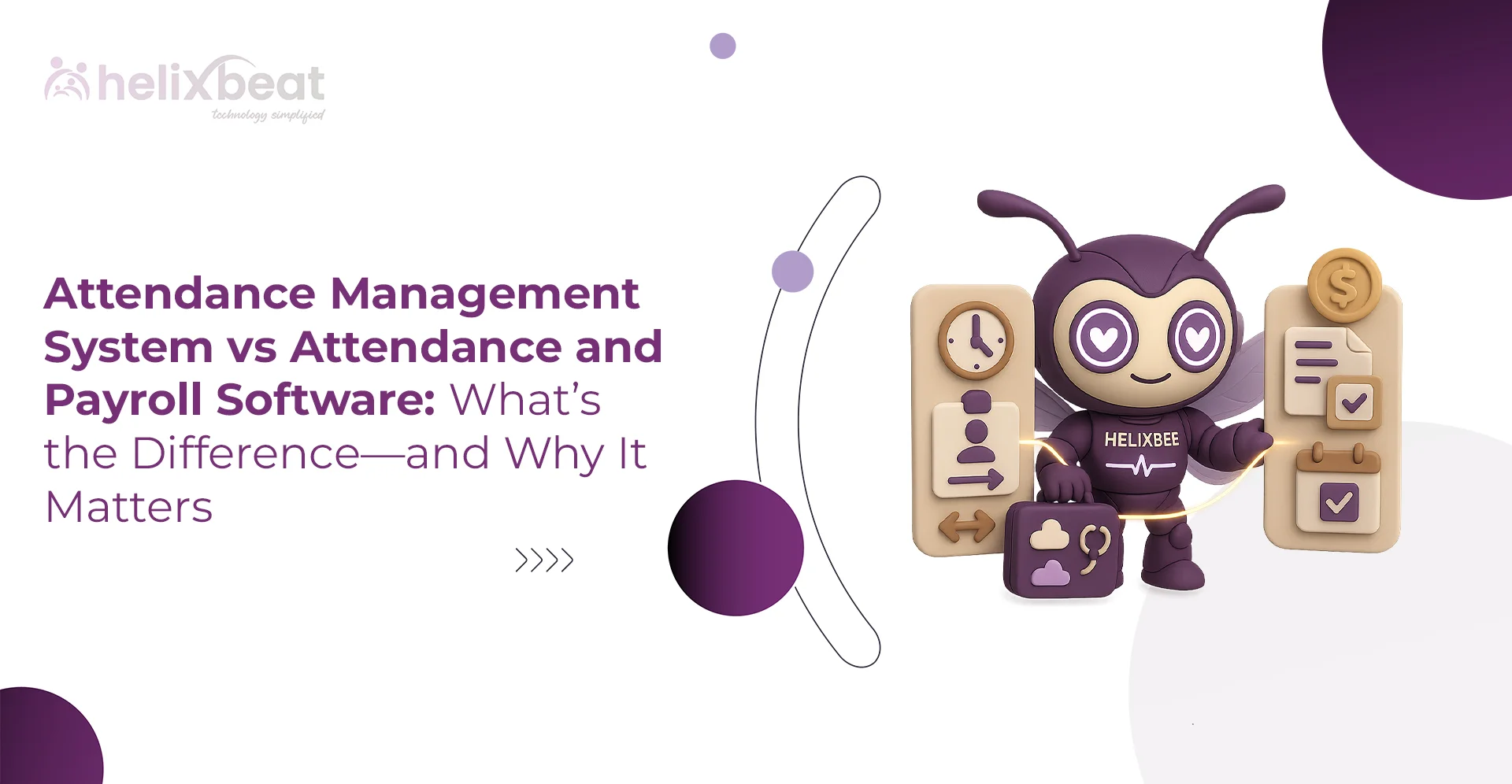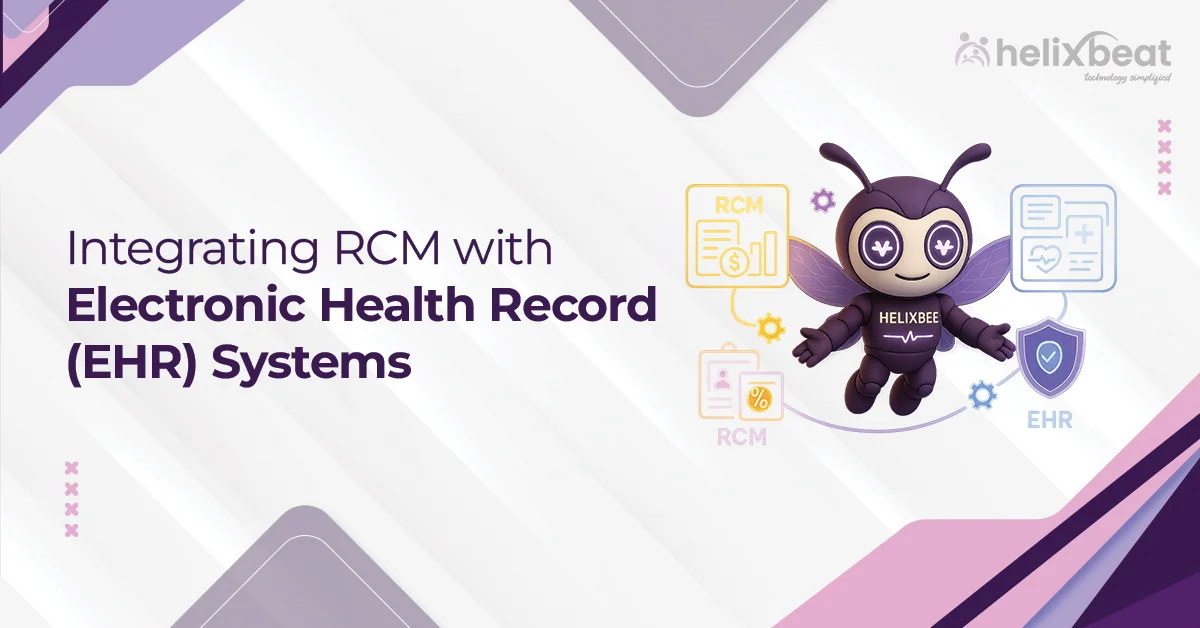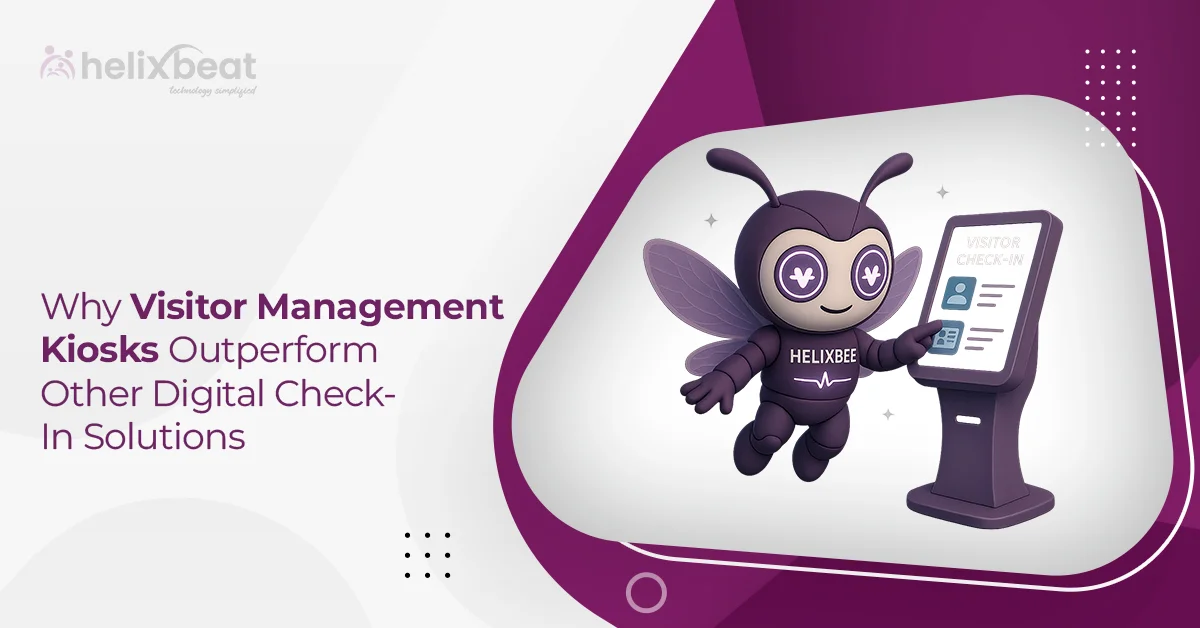Did you know that 70% of companies see QA and testing as essential to digital transformation? Yet, many still treat it as just a step at the end—just to catch bugs. But today, with quick updates and cloud apps, just testing at the end isn’t enough.
Modern QA testing services do much more than find errors. They help teams test faster with automation, check performance under real-world loads, and spot problems early through shift-left testing. With tools that plug into your CI/CD pipeline, QA now supports faster rollouts, stronger systems, and better user experiences.
It’s not just about quality; it’s about making sure every digital product performs reliably, securely, and at scale.
Let’s see how smart QA services are helping businesses move faster, reduce risks, and stay ahead in their digital journey.

Table of Contents
Role of QA in Digital Transformation
As businesses move to digital platforms, quality becomes more than just a checkpoint; it becomes a continuous process. Modern QA is deeply involved in making sure digital systems work well, scale smoothly, and deliver a great user experience from day one.
Here’s how QA testing services support digital transformation:
- Early Bug Detection (Shift-Left Testing): QA teams are involved from the start of the development cycle, helping catch issues early before they affect later stages.
- Support for CI/CD Pipelines: Automated testing fits into continuous integration and deployment workflows, allowing faster and more frequent releases with fewer errors.
- Performance Testing Services: QA tests how apps behave under load to make sure they don’t crash or slow down when traffic spikes.
- API and Integration Testing: As systems connect via APIs, QA verifies that data flows correctly and securely between services.
- Security and Compliance Checks: QA helps identify vulnerabilities and ensures the application follows necessary industry regulations like GDPR or HIPAA.
In this way, QA doesn’t just test software; it actively drives reliable, secure, and scalable digital innovation.
Why Modern QA Matters in Your Digital Transformation
QA testing services today are not just about testing code; they’re about protecting brand reputation, improving speed, and delivering seamless user experiences.
Here’s why modern QA plays a critical role in your digital transformation journey:
1. Users Expect Flawless Experiences
In the digital world, patience is short. If your app crashes or lags, users simply move on. Modern QA focuses on real-world scenario testing to make sure the app performs smoothly across devices, networks, and browsers. It helps fix functional issues, UI glitches, and accessibility gaps before users ever encounter them.
Outcome: Fewer complaints, higher retention, and stronger brand loyalty.
According to PwC, 32% of customers stop interacting with a brand they love after just one bad experience.
2. Fast Releases Need Solid Guardrails
With CI/CD pipelines and agile sprints, releases are more frequent than ever. But speed without structure is risky. QA adds that safety net—automated tests, continuous feedback, and rapid rollback mechanisms—all baked into the release cycle.
Benefit: You move fast without breaking things.
A Forrester report found that organizations with mature DevOps and QA practices deploy 200x more frequently and have 24x faster recovery times than those without.
3. Security Starts with Early Testing
Today’s apps handle sensitive data like banking info, personal IDs, and medical records. A missed security flaw could lead to a breach. Modern QA services include penetration testing, data privacy validation, and compliance checks to spot weak spots before they go live.
Proactive QA reduces legal risk and builds customer trust.
IBM’s 2023 Cost of a Data Breach Report shows the average cost of a data breach is $4.45 million, and breaches caused by vulnerabilities in third-party software accounted for 15% of incidents.
4. Quality Metrics Drive Better Decisions
Modern QA isn’t just about finding bugs; it’s about collecting insights. Teams now track test coverage, defect density, and performance metrics in real-time dashboards. This helps developers, product owners, and business leaders make informed go/no-go decisions during each sprint.
Result: Every release is backed by data, not guesswork.
World Quality Report 2023 reveals that 67% of organizations now use QA dashboards to support release decisions, and 59% prioritize test data analytics to guide improvements.
How Today’s QA Services Help Businesses Go Digital
Modern QA isn’t just a behind-the-scenes task anymore; it now plays a big role in helping businesses grow digitally. From automating repetitive tasks to validating performance and securing sensitive data, QA helps businesses launch better products faster and with fewer risks. Here’s how:
1. Test Automation for Faster Releases
In a digital-first business, speed matters. Manual testing is too slow for modern development cycles. QA testing services now use test automation tools like Selenium, Cypress, or Playwright to run thousands of test cases in minutes.
This allows companies to:
- Push updates more frequently (supporting agile sprints and CI/CD)
- Reduce human error in repetitive testing
- Save time and cost in long-term maintenance
Automation enables faster time-to-market without compromising on quality.
According to GitLab’s DevSecOps report, teams using test automation are 2.5x more likely to deploy code multiple times a day.
2. Performance Testing Services for Real-World Readiness
As customer expectations rise, your digital platforms must handle heavy traffic, fast loading, and real-time transactions. Performance testing services simulate real-world user loads to measure how your application performs under stress.
Key benefits include:
- Detecting system bottlenecks before customers do
- Avoiding crashes during peak usage
- Maintaining consistent speed and responsiveness
This is especially critical for e-commerce, finance, and SaaS platforms where downtime equals revenue loss.
A Google study shows that a 1-second delay in page load can reduce conversions by up to 20%.
3. Shift-Left Testing for Early Risk Detection
Traditional QA happens late in the development cycle, but that often leads to last-minute surprises. With shift-left testing, QA moves closer to the design and development phase.
This allows teams to:
- Validate requirements early
- Catch bugs in the code before they spread
- Reduce rework and delays later in the cycle
Shift-left reduces the cost of fixing defects and helps maintain project timelines.
IBM estimates that bugs found during the testing phase cost 15x more to fix than those caught during the design stage.
4. API and Integration Testing for Connected Systems
Digital transformation often involves multiple platforms, apps, and services talking to each other via APIs. QA services now include API testing to verify that these integrations work smoothly and securely.
For example:
- Checking if payment gateways sync correctly with your backend
- Making sure mobile apps pull the right user data from the server
- Ensuring data doesn’t get lost or exposed during transfer
This helps businesses deliver unified digital experiences without functional gaps.
Postman’s 2024 State of the API report notes that 89% of developers use APIs daily, making API testing a critical QA task.
5. Security and Compliance Testing for Safer Digital Growth
With increasing cyber threats, security is a major part of QA today. QA testing services now run vulnerability scans, penetration testing, and compliance audits to keep software safe.
These checks help:
- Protect sensitive customer data
- Prevent financial and legal penalties
- Meet standards like GDPR, HIPAA, or PCI-DSS
Security testing gives peace of mind to both businesses and users.
IBM’s 2023 Cost of a Data Breach Report shows the average cost of a data breach is $4.45 million, making early security testing critical.
Benefits of QA Service in Digital Transformation
As businesses shift to digital platforms, delivering high-quality software quickly and consistently becomes critical. That’s where QA services step in, not just to test but to support the entire transformation journey.
Here are the key benefits of using QA testing services in your digital transformation:
- Faster Time-to-Market: Automated testing and early defect detection help speed up development cycles without sacrificing quality.
- Improved Product Stability: Continuous testing in CI/CD pipelines ensures each release is reliable and bug-free.
- Enhanced User Experience: QA teams test across devices, screen sizes, and network conditions to deliver consistent, smooth user journeys.
- Scalability and Load Handling: With performance testing services, your apps can handle high traffic and scale without failures.
- Data Security and Compliance: Security testing identifies vulnerabilities and supports compliance with GDPR, HIPAA, and other regulations.
- Reduced Development Costs: Catching bugs early reduces rework, minimizes downtime, and saves costs over time.
- Informed Decision-Making: QA dashboards provide real-time insights into defect trends, test coverage, and release readiness.
QA is no longer a final step; it’s a growth enabler that keeps your digital transformation on track.
Final Words
Many businesses struggle with digital transformation not because their ideas are wrong but because their software isn’t tested well enough. Bugs slip through, releases get delayed, and users end up frustrated. Traditional QA is often too slow or disconnected from quick-working teams.
Modern QA testing services solve this by testing early, using automation, and working closely with your developers. It helps you launch faster, avoid issues, and deliver better user experiences.
Helixbeat offers Testing as a Service designed for today’s digital teams. From performance testing to automation, we help you keep quality on track without slowing you down. Whether you’re scaling a startup app or upgrading an enterprise platform, our QA solutions adapt to your workflow and launch your product successfully.
Want fewer bugs and smoother launches? Let Helixbeat handle QA while you focus on building great products.
FAQ:
1. What is a QA testing service?
QA testing service is the process of checking software for bugs, performance issues, and usability problems. It includes manual testing, automation, performance, and security checks to deliver high-quality products.
2. What does a QA tester do?
A QA tester finds bugs, writes test cases, runs tests, and ensures the software works as expected across different devices and platforms.
3. How to start QA testing?
Start by understanding the software requirements, creating test cases, running manual tests, and gradually learning tools like Selenium or JIRA for automation and tracking.
4. Does QA testing require coding?
Manual testing doesn’t need coding. But for automation and advanced testing, basic knowledge of languages like Java or Python is helpful.
5. What are performance testing services?
Performance testing checks how software behaves under load or stress. It helps detect slowdowns and crashes using tools like JMeter or LoadRunner.














